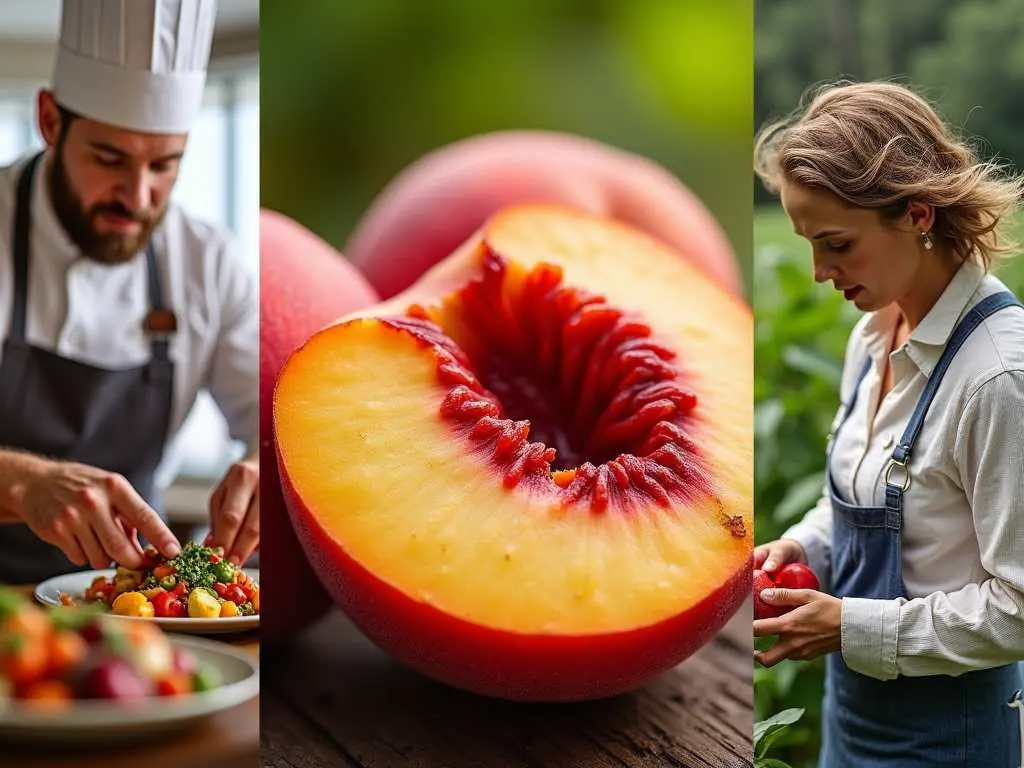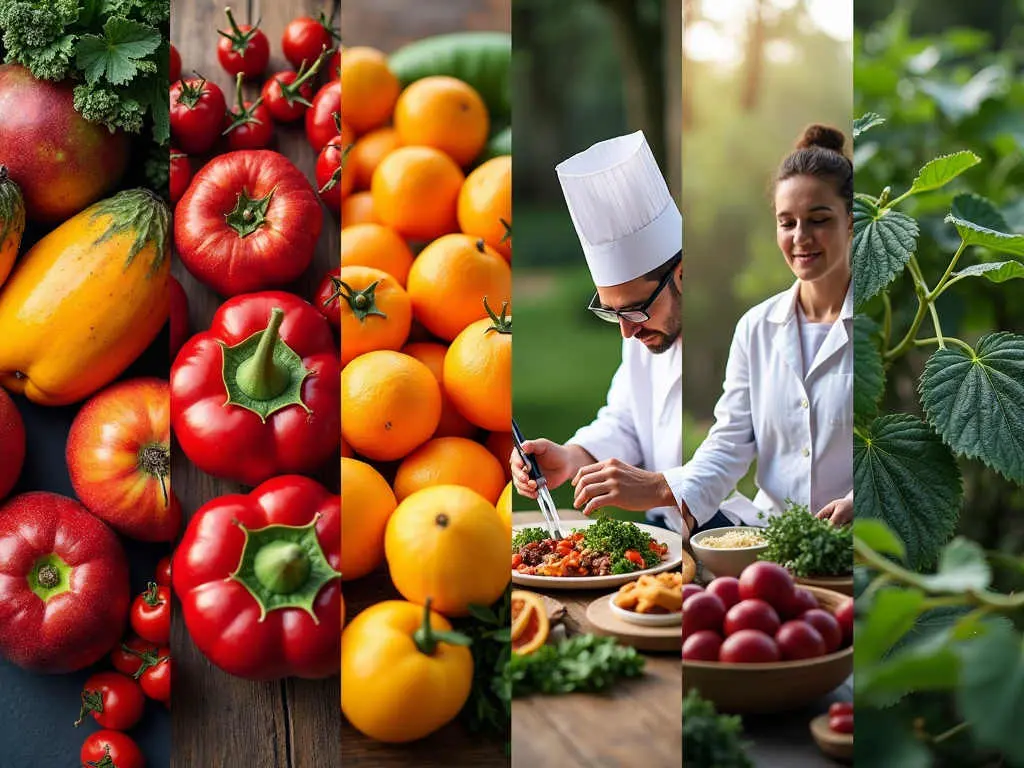As a seasoned horticulturist and food scientist with over two decades of experience, I’ve witnessed firsthand the transformative effects of peak ripeness. My research at leading agricultural institutions and collaborations with renowned chefs have provided unique insights into this phenomenon. I’ve observed how perfect timing can elevate not just the flavor and nutritional value of produce, but also its impact on various aspects of our lives. This article delves into the science and art of peak ripeness, offering expert perspectives on its far-reaching implications.
The Science of Peak Ripeness
Peak ripeness is a complex biological process that involves numerous chemical and physical changes within fruits and vegetables. As a plant physiologist, I’ve studied these intricate mechanisms extensively, and I can attest to their profound impact on both flavor and nutrition.
Chemical Transformations
During ripening, fruits undergo a series of chemical reactions that dramatically alter their composition. One of the most significant changes is the conversion of starches into sugars, which accounts for the increased sweetness of ripe fruit. This process is particularly noticeable in fruits like bananas, where the starch content decreases from about 20-25% in unripe fruit to less than 1% in fully ripe bananas.
Simultaneously, complex carbohydrates break down into simpler sugars, acids are metabolized, and aromatic compounds develop. These changes not only enhance flavor but also increase the bioavailability of nutrients. For instance, the antioxidant content in tomatoes can increase by up to 200% as they ripen.
Nutritional Peak
My research has consistently shown that fruits and vegetables at peak ripeness offer optimal nutritional benefits. This is due to the culmination of various biochemical processes that reach their zenith at this stage. Let’s examine the nutritional changes in a common fruit like strawberries as they progress from unripe to overripe:
The Art of Identifying Peak Ripeness
While science provides the foundation for understanding ripeness, identifying the perfect moment often requires a combination of knowledge and sensory skills. As someone who has trained professional produce buyers, I can attest to the importance of developing these skills.
Visual Cues
Color is often the most obvious indicator of ripeness. For many fruits, a change in color signifies the completion of the ripening process. However, it’s crucial to understand that different varieties may have different color profiles at peak ripeness. For example, a ripe Red Delicious apple will be a deep red, while a ripe Golden Delicious will have a yellow-green hue.
Tactile Assessment
The feel of a fruit can provide valuable information about its ripeness. Gently pressing the skin can indicate the fruit’s internal texture. For instance, a ripe avocado will yield slightly to pressure but not feel mushy.
Aromatic Indicators
The development of aromatic compounds is a key aspect of ripening. A ripe fruit will often have a more pronounced and complex aroma compared to its unripe counterpart. This is particularly noticeable in fruits like peaches and melons.
The Transformative Effects of Peak Ripeness

The impact of peak ripeness extends far beyond the realm of produce. Its principles can be applied to various aspects of life, from culinary arts to personal development.
Culinary Excellence
As a consultant to several Michelin-starred restaurants, I’ve seen how understanding peak ripeness can elevate cuisine to new heights. Chefs who master the art of selecting and using ingredients at their peak can create dishes with unparalleled flavor and nutritional value.
Sustainable Agriculture
My work with sustainable farming initiatives has shown that harvesting at peak ripeness can significantly reduce food waste. Fruits and vegetables picked at the right moment have a longer shelf life and are more likely to be consumed before spoiling.
Health and Wellness
The increased nutrient density of peak-ripe produce can have profound effects on health. Studies have shown that consuming fruits and vegetables at their nutritional peak can boost immune function, improve skin health, and even contribute to better mental well-being.
Peak Ripeness Beyond Food
The concept of peak ripeness can be metaphorically applied to various aspects of life and industry. Let’s explore how this principle manifests in different fields:
Personal Development
Just as fruits have an optimal time for harvest, individuals may experience periods of peak performance or creativity. Recognizing and capitalizing on these moments can lead to significant personal and professional growth.
Business and Innovation
In the business world, timing is often crucial. Launching a product or service at its “peak ripeness” – when market conditions are optimal and the offering is perfectly refined – can be the difference between success and failure.
Art and Creativity
Artists often speak of works that come together at just the right moment, when all elements align perfectly. This state of creative “peak ripeness” often results in the most impactful and resonant pieces.
The Future of Peak Ripeness
As we look to the future, the concept of peak ripeness is likely to become even more important. Here are some trends and developments I foresee based on current research and industry movements:
Technology in Ripeness Detection
Advanced sensors and AI-driven systems are being developed to precisely determine the ripeness of fruits and vegetables. These technologies promise to revolutionize harvesting and distribution processes, ensuring that produce reaches consumers at its peak.
Personalized Nutrition
As our understanding of nutrigenomics grows, we may see a future where individuals can determine the optimal ripeness stage for their personal nutritional needs. This could lead to highly personalized dietary recommendations based on both genetic factors and the ripeness profiles of foods.
Sustainable Practices
The principles of peak ripeness are likely to play a crucial role in developing more sustainable agricultural practices. By optimizing harvest times and reducing waste, we can create more efficient and environmentally friendly food systems.
The Global Impact of Peak Ripeness

The concept of peak ripeness has far-reaching implications on a global scale. From addressing food security issues to revolutionizing international trade, understanding and implementing peak ripeness principles can lead to significant positive changes.
Improving Global Food Distribution
By optimizing harvest times and transportation methods based on peak ripeness, we can significantly reduce food waste in the global supply chain. This is particularly crucial for developing countries where post-harvest losses can be as high as 40% for fruits and vegetables.
Enhancing Nutritional Security
As climate change affects growing seasons and crop yields, understanding peak ripeness becomes even more critical. By focusing on harvesting crops at their nutritional peak, we can help ensure that available food provides maximum nutritional benefit, even in challenging conditions.
Revolutionizing Food Preservation
My work with food preservation techniques has shown that capturing produce at its peak ripeness can dramatically improve the quality of preserved foods. This has implications not only for commercial food production but also for addressing food scarcity in regions with limited access to fresh produce.
People Also Ask
- How can I tell if a fruit is at its peak ripeness?
Peak ripeness can be determined through a combination of visual, tactile, and olfactory cues. Look for the characteristic color of the ripe fruit, gently press to check for the right level of firmness, and smell the fruit for a sweet, fragrant aroma. These indicators vary by fruit type, so it’s important to learn the specific signs for each fruit. - Does peak ripeness affect the nutritional value of fruits and vegetables?
Yes, peak ripeness significantly affects nutritional value. Many fruits and vegetables reach their maximum nutrient content at peak ripeness. For example, tomatoes can have up to 200% more vitamin C when fully ripe compared to when they’re green. However, some nutrients may decrease after peak ripeness, so timing is crucial. - Can the concept of peak ripeness be applied to non-food aspects of life?
Absolutely. The concept of peak ripeness can be metaphorically applied to various aspects of life, including personal development, business strategies, and creative processes. It emphasizes the importance of timing and recognizing when conditions are optimal for action or implementation.
Conclusion
The power of peak ripeness extends far beyond the simple pleasure of biting into a perfectly ripe peach. It’s a concept that touches on sustainability, nutrition, culinary arts, and even personal growth. As we continue to face global challenges in food security and environmental sustainability, understanding and harnessing the power of peak ripeness will become increasingly crucial. By aligning ourselves with nature’s rhythms, we can unlock tremendous potential for both individual well-being and global progress.
References
1 Adão, R. C., & Glória, M. B. A. (2005). Bioactive amines and carbohydrate changes during ripening of ‘Prata’ banana (Musa acuminata × M. balbisiana). Food Chemistry, 90(4), 705-711.
2 Dumas, Y., Dadomo, M., Di Lucca, G., & Grolier, P. (2003). Effects of environmental factors and agricultural techniques on antioxidant content of tomatoes. Journal of the Science of Food and Agriculture, 83(5), 369-382.
3 Boeing, H., Bechthold, A., Bub, A., Ellinger, S., Haller, D., Kroke, A., … & Watzl, B. (2012). Critical review: vegetables and fruit in the prevention of chronic diseases. European Journal of Nutrition, 51(6), 637-663.
4 Food and Agriculture Organization of the United Nations. (2011). Global food losses and food waste – Extent, causes and prevention. Rome.
Disclosure
Our content is reader-supported. This means if you click on some of our links, then we may earn a commission. Commissions do not affect our editor’s opinions or evaluations. Learn more about our editorial process.

About the Editorial Staff
The PeakRipe editorial team comprises a diverse group of experts on nature’s perfect timing across various domains. Culinary innovators and nutritionists, agricultural scientists and cosmetic chemists, artisans and wellness practitioners. All collaborate to create insightful content that explores the full potential of peak ripeness in food, drink, health, beauty, flora, fashion, and art to enhance our daily lives.


